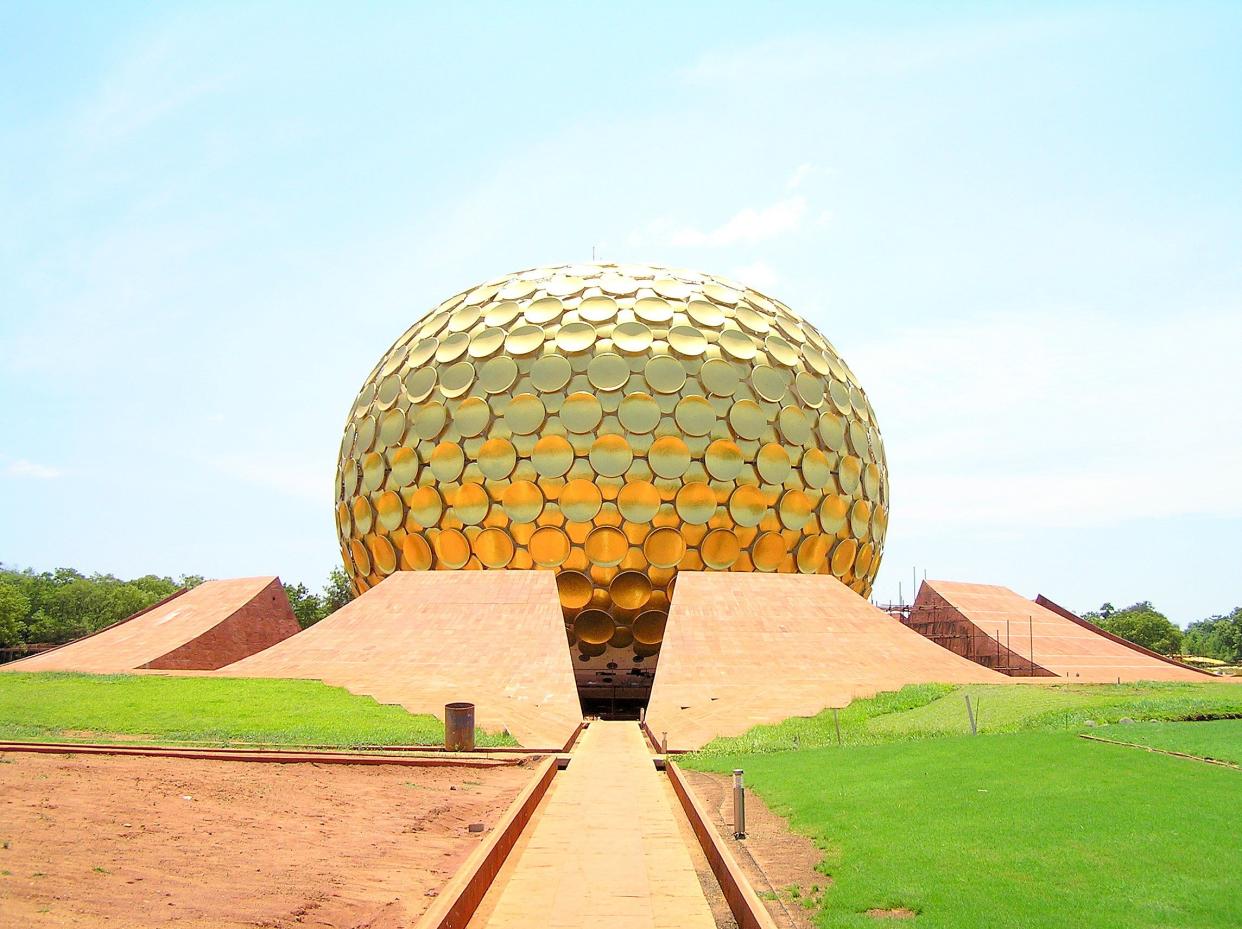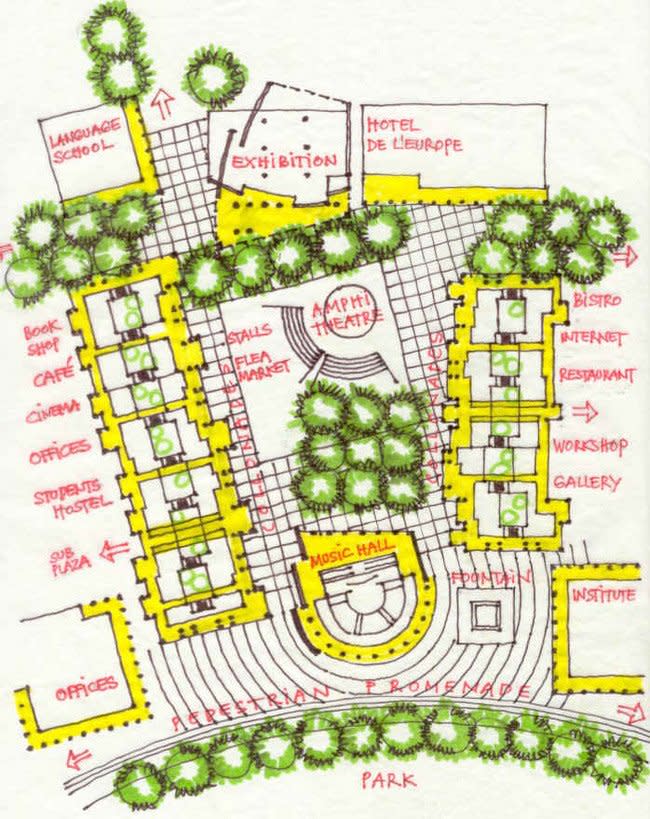This spiral-shaped Indian town wants to be a government and money-free utopia

Wikipedia Commons
Imagine a city free of crime, poverty, money, government, and hardship.
That's the utopian vision for Auroville, a township in India that's dubbed "the City of Dawn." Founded in 1960, it was originally envisioned as a peaceful, anarchic community free of strife. It's not quite there yet.
Pictured below, the city plan looks like a massive spiral of homes, public buildings, farms, and forests. "The purpose of Auroville is to realize human unity," reads the city's site.

Wikipedia Commons
Auroville centers around the Matrimandir, a two-story spherical chamber made from gold plates. Inside, there's enough room for about 100 people to pray and meditate.
Originally intended for 50,000 people, only about 2,500 permanent residents live there today, and around 5,000 tourists visit every year.
Instead of a government, there are self-formed committees that run the town. In lieu of money, there's the "Aurocard" (though as many travelers note, a majority of businesses still accept cash).
Instagram Embed:
http://instagram.com/p/BG1AerhgeIb/embed/
Width: 800px
Alcohol (which supposedly isn't sold inside Auroville) and cars (which are banned from entering its roads) are both strongly discouraged.
None of these rules are actually enforced, since technically there isn't an official goverment or even a police force. According to Auroville's vision, the town functions based on a system of trust between residents.
Except for the non-existent government, today's Auroville isn't anywhere close to the envisioned plan, but according to the city's site, it's actively working toward it.
Instagram Embed:
http://instagram.com/p/BCxEOOmHGNX/embed/
Width: 800px
In 1965, Mirra Alfassa, a spiritual leader known as the "Mother" of Auroville, drew the first plan for the town, which was mostly uninhabited at the time. She divided Auroville into four zones: industrial (organic farms), cultural (shops and businesses), residential, and international (areas for visitors), which French architect Roger Anger turned into the spiral masterplan that same year.

Wikipedia Commons
Outside organizations have started projects to further Auroville's original vision.
Acclaimed architect Anupama Kundoo, for example, has designed Lego-style houses for residents. The architects from the Auroville Design Consultancy have also designed over 20 public spaces for the town, including kindergartens, libraries, resorts, and homes. Though only some are built, the projects all focus on human connection and environmental sustainability.
As writer Maddy Crowell notes in Slate, Auroville is dealing with some serious issues in spite of its optimism. For the last few years, it has struggled with reports of robberies, sexual assault, and murder. And although alcohol is discouraged, on her visit, a taxi driver told her that "no one follows this rule." Many shops and food markets still prefer cash over the Aurocard too, and it's uncertain who controls the local committee's finances, Crowell says.
In practice, Auroville's utopian city plan may not be working out as planned, but it certainly is an idealistic vision.
NOW WATCH: This all-black superyacht is the dream of billionaires around the world

 Yahoo News
Yahoo News 

